Configuring MFA for ISE with RADIUS
This guide provides steps for enabling multi-factor authentication (MFA) using RADIUS for Cisco's Identity Services Engine (ISE) product using ManageEngine ADSelfService Plus' MFA for VPN feature.
To enable RADIUS-based authentication for Cisco ISE, the MFA for VPN supports the following authentication methods in addition to the default username and password-based authentication:
- Push Notification Authentication
- Fingerprint/Face ID Authentication
- ADSelfService Plus TOTP Authentication
- Google Authenticator
- Microsoft Authenticator
- Yubico OTP (hardware key authentication)
The RADIUS-based MFA process for Cisco ISE using ADSelfService Plus
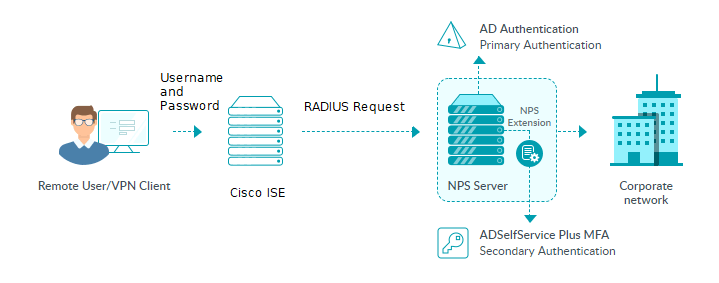
Configuration process
Prerequisites:
Step 1. Configuring MFA in ADSelfService Plus
- Log in to ADSelfService Plus as an admin.
- Go to Configuration → Self-Service → Multi-Factor Authentication → Authenticators Setup.
- Configure the authentication methods required.

- Go to MFA for Endpoints.
- Select a policy from the Choose the Policy drop-down. This policy will determine the users for whom MFA for Cisco ISE will be enabled. To learn more about creating an organizational unit or a group-based policy, click here.
- In the MFA for VPN Login section, select the checkbox next to Select the authenticators required. Choose the number of authentication factors to be enforced. Select the authentication methods to be used. The authentication methods listed can also be rearranged by dragging and dropping at the necessary position.
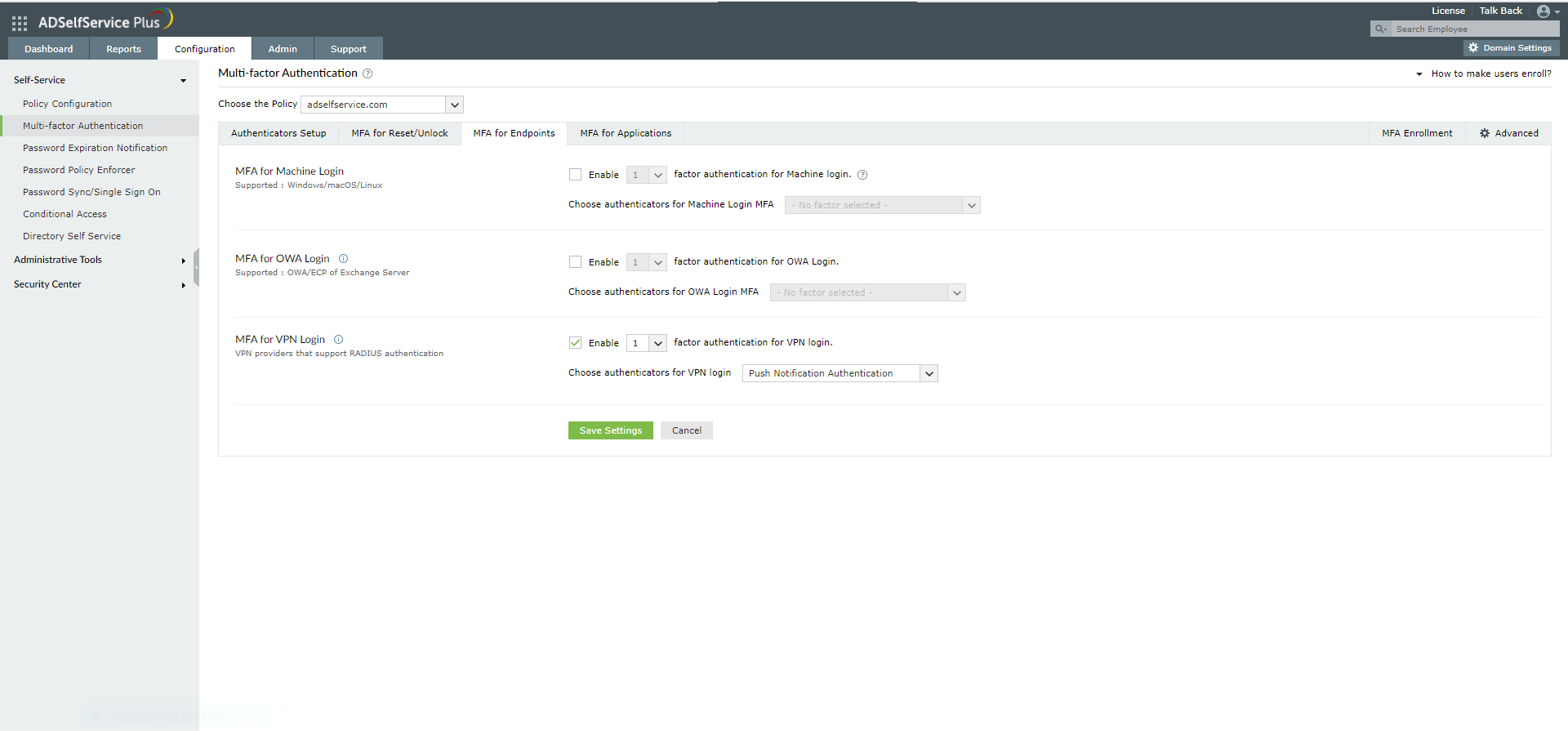
- Click the help icon next to MFA for VPN.
- Download the NPS extension using the Download link provided in the pop-up that appears.
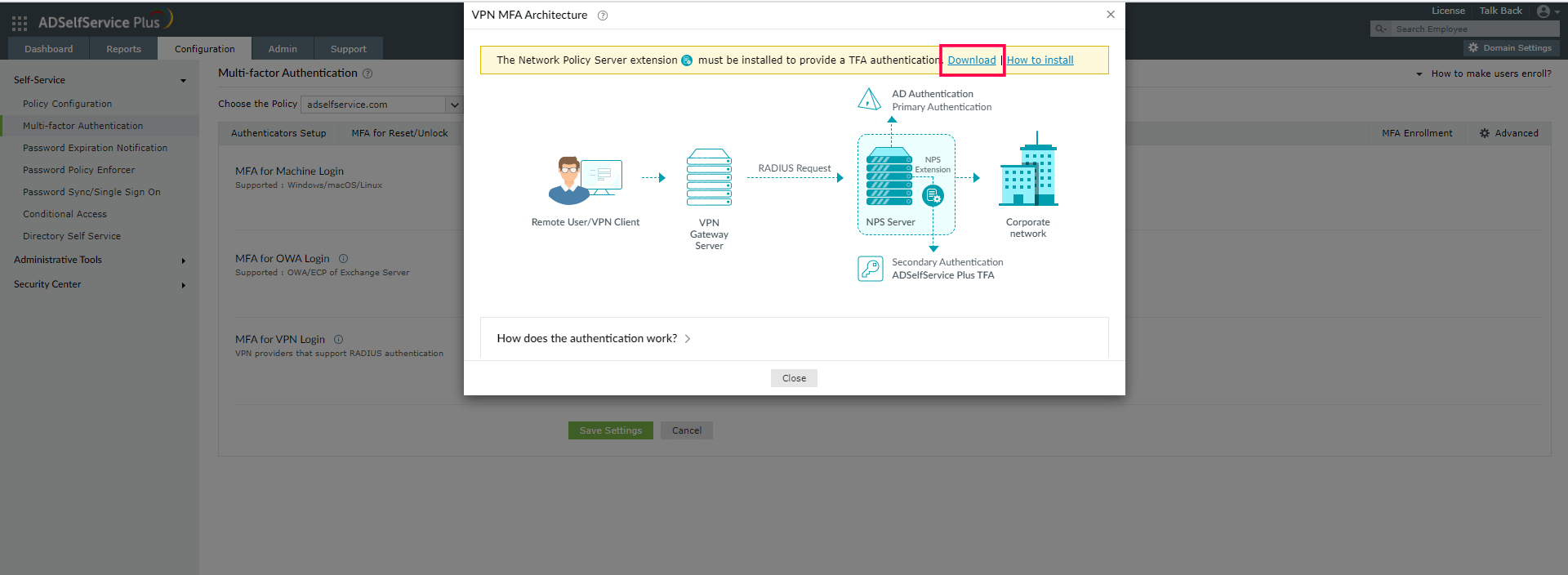
Step 2. Install the NPS Extension
- Copy the extension file (ADSSPNPSExtension.zip) to the Windows server, which you have configured as the RADIUS server. Extract the ZIP file’s content and save it in a location.
- Open Windows PowerShell (x64) as administrator and navigate to the folder where the extension files content is located.
- Execute the following command:
PS C:\> .\setupNpsExtension.ps1 Install
Note: If the NPS extension plug-in has to be uninstalled or updated to newer versions and configuration data, enter Uninstall and Updated respectively instead of Install.
- After installation, you will be prompted to restart the NPS Windows service. Proceed with the restart.
- Configure a RADIUS client in the NPS service for ADSelfService Plus. Set a shared secret during configuration for future use.
Step 3. Configure Cisco ISE
- Navigate to Administration → Network Resources → External RADIUS Servers and click Add.

- Enter ADSelfServicePlusRADIUS as the name and enter the following information:
- Host IP: The hostname or IP address of your NPS server.
- Shared Secret: Mention the shared secret set during RADIUS client configuration.
- Authentication Port: 1812 (or whichever port specified in your authproxy.cfg file).
- Server Timeout: Provide a minimum of 65 seconds to allow sufficient time to complete MFA.
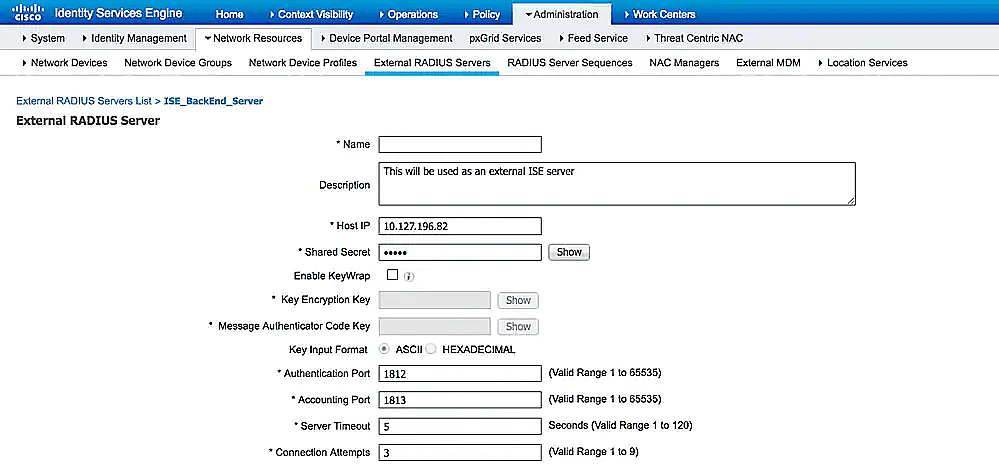
- Click Save to add the new server.
- Navigate to Administration → Network Resources → RADIUS Server Sequence and click Add.

- Enter the Name as ADSelfServicePlusRADIUSSequence.
- Select the ADSelfServicePlusRADIUS server from the Available list, and click the arrow to add the ADSelfServicePlusRADIUS server to the Selected list. Also, select the Local accounting checkbox.
- If authorization settings or other device posturing settings have to be configured with the ISE policies then select the On AccessAccept checkbox. Then go to Advanced Attribute Setting → Authorization Policy. If not, leave the checkbox unselected.
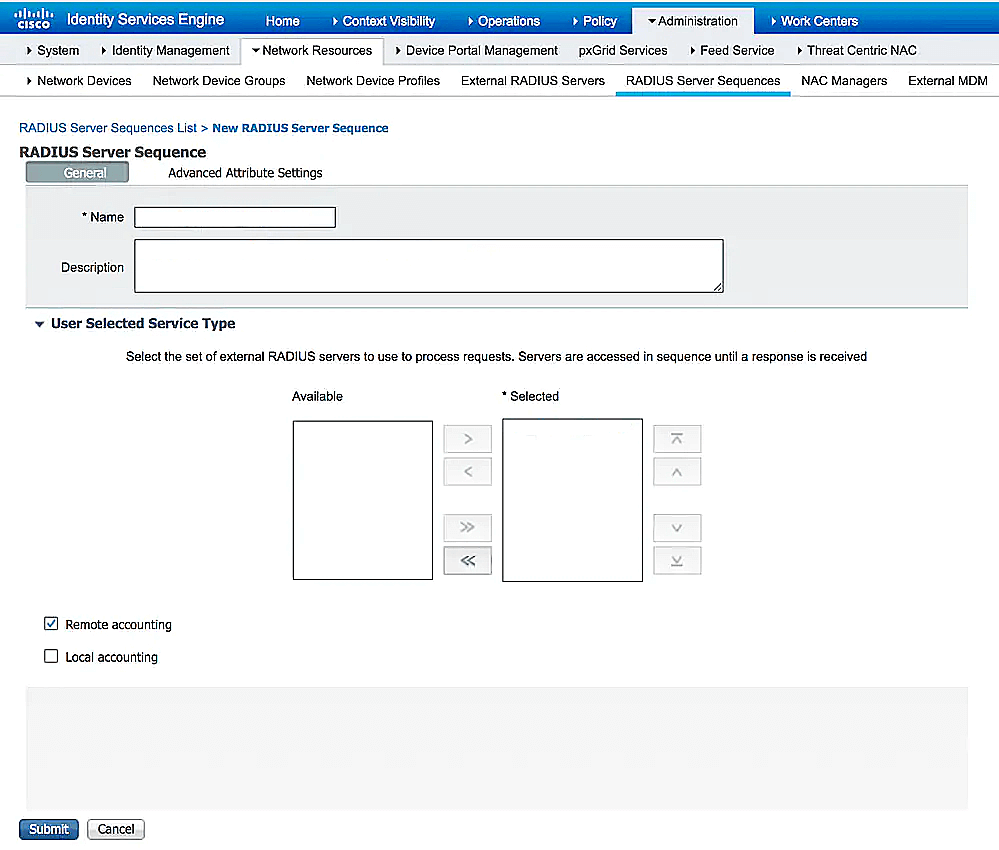
- Click Save to apply the change.
- Go to Policy → Policy Sets.
- Click the drop-down of the policy set to be modified and select ADSelfServicePlusRADIUSSequence.

- Click Save.
Features of ADSelfService Plus
For more information on the product, visit https://www.manageengine.com/products/self-service-password/. If you have any questions, contact us at support@adselfserviceplus.com
Highlights of ADSelfService Plus
Allow Active Directory users to self-service their password resets and account unlock tasks, freeing them from lengthy help desk calls.
Get seamless one-click access to 100+ cloud applications. With enterprise single sign-on, users can access all their cloud applications using their Active Directory credentials.
Intimate Active Directory users of their impending password and account expiry via email and SMS notifications.
Synchronize Windows Active Directory user passwords and account changes across multiple systems automatically, including Microsoft 365, Google Workspace, IBM iSeries, and more.
Strong passwords resist various hacking threats. Enforce Active Directory users to adhere to compliant passwords by displaying password complexity requirements.
Enable Active Directory users to update their latest information themselves. Quick search features help admins scout for information using search keys like contact numbers.